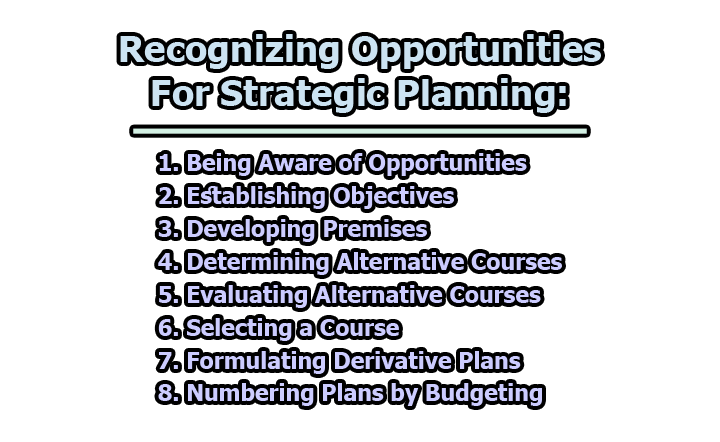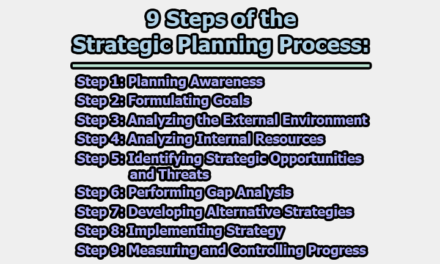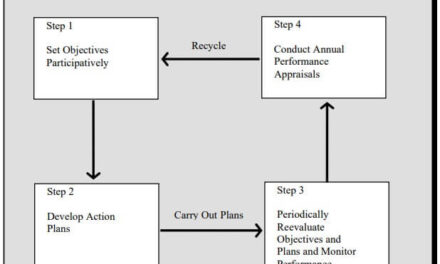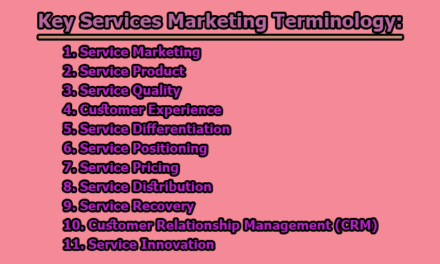Recognizing Opportunities for Strategic Planning:
In the ever-evolving landscape of business and organizations, the process of recognizing opportunities for strategic planning serves as the linchpin that sets the stage for success. It is a vital and dynamic endeavor that demands a forward-thinking mindset and a systematic approach. Recognizing opportunities is the inception point of strategic planning, where the seeds of innovation, growth, and progress are sown. It requires a keen awareness of both the external and internal environments, a precise understanding of organizational objectives, and a commitment to charting a path toward a brighter future. In this article, we delve into the critical role of recognizing opportunities in the strategic planning process, exploring its various facets, and emphasizing its profound significance in shaping the destiny of organizations.
1. Being Aware of Opportunities: The genesis of strategic planning hinges on being aware of opportunities. This foundational step requires individuals and organizations to cultivate a vigilant and proactive mindset. It entails actively scanning the external and internal environments to identify potential avenues for growth, improvement, or innovation. Opportunities can emerge from a myriad of sources, including changes in market trends, technological advancements, shifts in consumer behavior, competitive landscape alterations, or emerging regulatory changes.
Being aware of opportunities necessitates continuous information gathering and analysis. Organizations must monitor industry trends, keep a close eye on competitors, and stay attuned to political, economic, social, and technological developments. Internal awareness is equally vital, as organizations should assess their own strengths, weaknesses, and capabilities to identify areas where opportunities can be harnessed effectively.
2. Establishing Objectives: Once an opportunity is identified, the next crucial step is establishing clear and measurable objectives. These objectives serve as guiding beacons, illuminating the path forward and providing a framework for decision-making and resource allocation. Objectives should adhere to the SMART criteria, ensuring they are Specific, Measurable, Achievable, Relevant, and Time-bound.
Well-crafted objectives articulate what an organization hopes to achieve through its strategic planning efforts. They help focus attention and resources on key priorities, ensuring that everyone within the organization understands the desired outcomes. Objectives also serve as a yardstick for measuring progress and success, enabling organizations to stay on track and make necessary adjustments as circumstances evolve.
3. Developing Premises: The process of developing premises follows closely on the heels of establishing objectives. Premises refer to the assumptions and conditions that underpin the identified opportunity and objectives. These assumptions can pertain to both internal and external factors that might impact the organization’s ability to capitalize on the opportunity effectively.
The development of premises involves a thorough examination of factors such as market dynamics, consumer behavior, regulatory environments, economic conditions, and technological advancements. Organizations must critically assess the validity of these assumptions and consider potential risks and uncertainties. This step serves as a reality check, ensuring that strategic plans are built on a solid foundation of informed expectations.
4. Determining Alternative Courses: Strategic planning is not a one-size-fits-all endeavor. It thrives on creativity and flexibility, requiring organizations to consider multiple courses of action. Determining alternative courses involves brainstorming and generating various strategic options, each with its own set of advantages and disadvantages. This step encourages innovative thinking and ensures that organizations do not confine themselves to a single path.
Identifying alternative courses of action is a collaborative process that often involves cross-functional teams and diverse perspectives. It can involve exploring different market segments, product offerings, distribution channels, or even entirely new business models. By diversifying their strategic options, organizations increase their adaptability and resilience in a rapidly changing environment.
5. Evaluating Alternative Courses: Having generated a set of alternative courses of action, the next critical step is their comprehensive evaluation. This evaluation process demands a rigorous analysis of each option’s feasibility, alignment with organizational goals, potential risks, and expected outcomes. Several analytical tools and techniques can aid in this evaluation, including cost-benefit analysis, SWOT (Strengths, Weaknesses, Opportunities, Threats) analysis, scenario planning, and risk assessment.
The evaluation process serves as a filter, helping organizations discern which alternatives are most viable and promising. It considers factors such as resource requirements, timeframes, and the organization’s risk appetite. Evaluating alternative courses ensures that the chosen strategic direction is well-informed and backed by a solid rationale.
6. Selecting a Course: After a careful evaluation of alternative courses, organizations must make the pivotal decision of selecting the most appropriate course of action. This decision should align closely with the established objectives and premises while taking into account the organization’s resources, capabilities, and risk tolerance. The selected course becomes the focal point of the strategic plan, setting the direction for future activities.
The selection process may involve trade-offs and compromises. Organizations must weigh the potential benefits of each course against the associated risks and resource requirements. Additionally, they must consider the competitive landscape and anticipate how their chosen course might position them in the market.
7. Formulating Derivative Plans: While the selected course serves as the primary strategic direction, it is essential to develop derivative plans that provide a detailed roadmap for implementation. These derivative plans outline the specific actions, tactics, and milestones necessary to achieve the overarching objectives. They serve as practical guides for individuals and teams responsible for executing the strategic plan.
Derivative plans can encompass various aspects of the organization, including marketing plans, financial projections, operational strategies, human resource initiatives, and technology roadmaps. Each derivative plan should be aligned with the chosen course and designed to support the overarching objectives. These plans facilitate coordination and ensure that all parts of the organization work in concert toward the common strategic goal.
8. Numbering Plans by Budgeting: Budgeting is a fundamental aspect of strategic planning that ensures the allocation of resources required for plan execution. Numbering plans by budgeting involves the meticulous process of assigning financial, human, and other resources in a manner that supports the chosen strategic course.
Budgets provide a quantitative framework for the strategic plan, translating objectives and actions into concrete financial terms. They help organizations prioritize initiatives, allocate funds to critical activities, and monitor progress. Budgeting also plays a pivotal role in resource optimization, ensuring that resources are allocated efficiently and effectively.
In conclusion, in the world of business, recognizing opportunities for strategic planning is not a solitary act but a continuous and transformative journey. It is the art of identifying possibilities amidst uncertainties, charting courses amidst complexities, and steering organizations toward their desired destinations. From being aware of opportunities and establishing clear objectives to evaluating alternative courses, selecting the optimal path, and meticulously numbering plans through budgeting, each step in the process carries its unique weight and purpose. As organizations continue to navigate the dynamic and competitive landscapes, the ability to recognize opportunities remains their compass, guiding them towards resilience, adaptability, and enduring success. In essence, recognizing opportunities for strategic planning is not just a strategic step; it is the nucleus around which strategic excellence revolves, and it is the promise of a prosperous and sustainable future.

Library Lecturer at Nurul Amin Degree College










